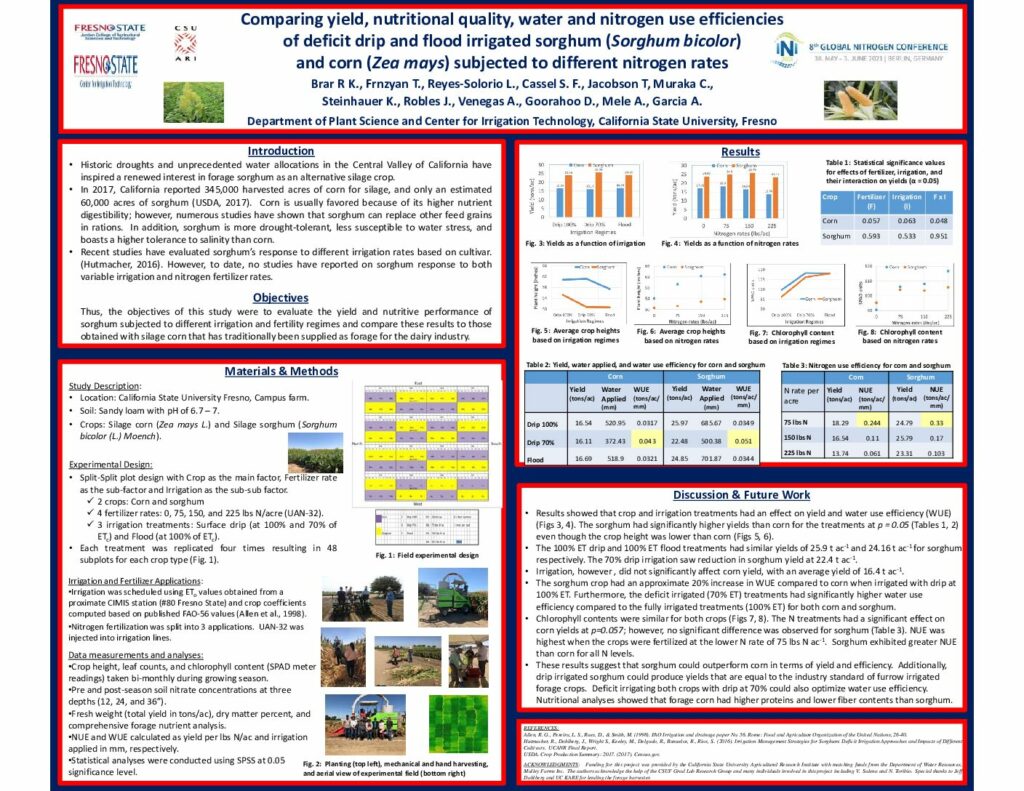Comparing yield, nutritional quality, water and nitrogen use efficiencies of deficit drip and flood irrigated sorghum

Results showed that crop and irrigation treatments had an effect on yield and water use efficiency (WUE) (Figs 3, 4). The sorghum had significantly higher yields than corn for the treatments at p = 0.05 (Tables 1, 2) even though the crop height was lower than corn (Figs 5, 6). The 100% ET drip and 100% ET flood treatments had similar yields of 25.9 t ac‐1 and 24.16 t ac‐1 for sorghum respectively. The 70% drip irrigation saw reduction in sorghum yield at 22.4 t ac‐1.
Irrigation, however , did not significantly affect corn yield, with an average yield of 16.4 t ac‐1. The sorghum crop had an approximate 20% increase in WUE compared to corn when irrigated with drip at 100% ET. Furthermore, the deficit irrigated (70% ET) treatments had significantly higher water use efficiency compared to the fully irrigated treatments (100% ET) for both corn and sorghum. • Chlorophyll contents were similar for both crops (Figs 7, 8). The N treatments had a significant effect on corn yields at p=0.057; however, no significant difference was observed for sorghum (Table 3). NUE was highest when the crops were fertilized at the lower N rate of 75 lbs N ac‐1. Sorghum exhibited greater NUE than corn for all N levels. These results suggest that sorghum could outperform corn in terms of yield and efficiency. Additionally, drip irrigated sorghum could produce yields that are equal to the industry standard of furrow irrigated forage crops. Deficit irrigating both crops with drip at 70% could also optimize water use efficiency. Nutritional analyses showed that forage corn had higher proteins and lower fiber contents than sorghum.
